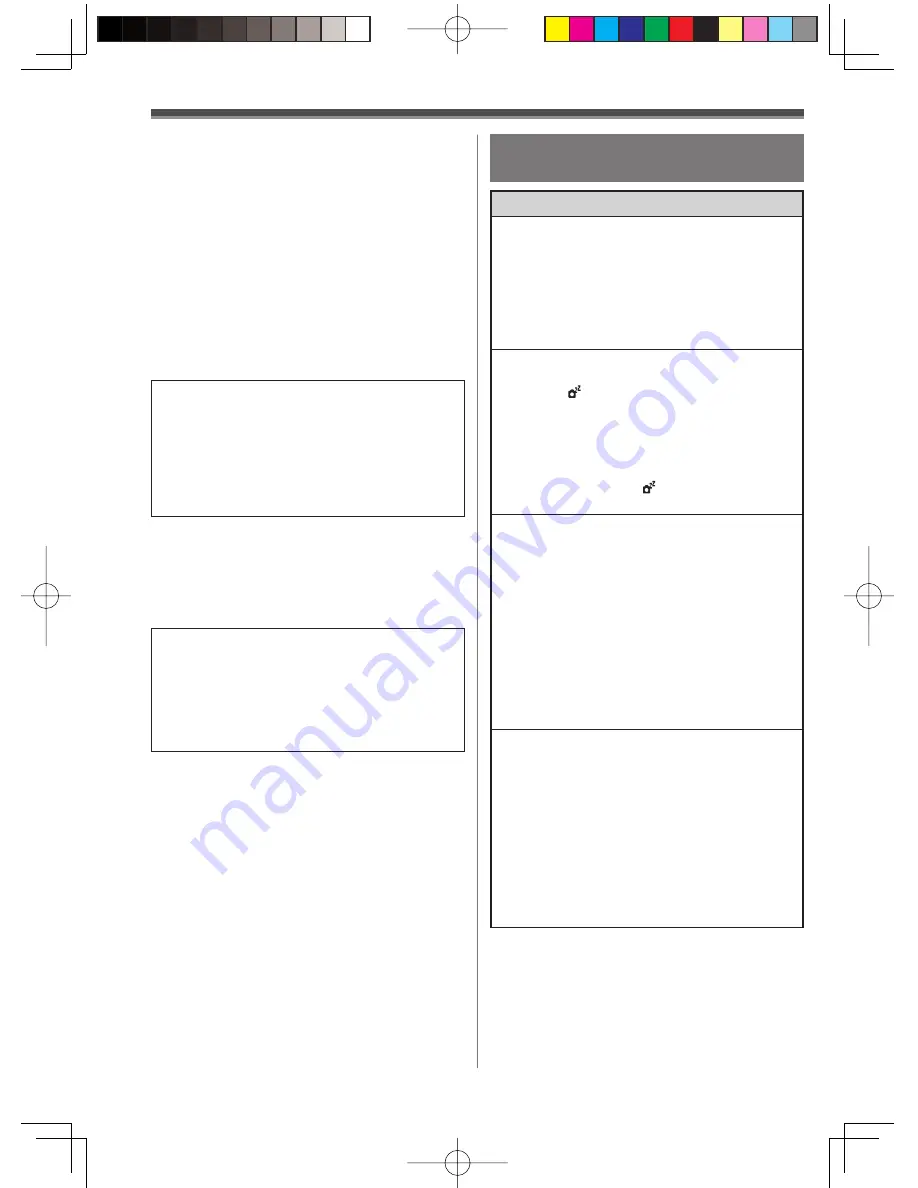
78
• Do not touch the terminals on the back of the Card
with your fingers. Do not allow dirt, dust or water to
enter it.
• Keep the Memory Card out of reach of children to
prevent swallowing.
LCD Monitor/Viewfinder/Lens Hood
LCD Monitor
• In a place with drastic temperature changes,
condensation may form on the LCD Monitor. Wipe
it with a soft dry cloth.
• If your Camcorder is extremely cold when you turn
its power on, the image on the LCD Monitor is
slightly darker than usual at first. However, as the
internal temperature increases, it goes back to the
normal brightness.
Viewfinder
• Do not direct the Viewfinder or Lens to the sun.
Internal components may be seriously damaged.
• When the Camcorder is used with a large capacity
Battery attached to it, it is not practical to look in the
Viewfinder from behind the Battery.
Lens Hood
• When you wish to attach the Tele Conversion
Lens (not supplied), Wide Conversion Lens (not
supplied), MC Protector (not supplied), or ND Filter
(not supplied), rotate these in a clockwise direction.
• If you push the [W/T] Lever toward [W] during
recording with the filter and conversion lens
attached to the Camcorder, 4 corners of the
image may become dark (vignetting). For details,
please refer to the operating instructions of your
accessories.
Extremely high precision technology is employed
to produce the LCD Monitor screen featuring a
total of approximately 105,000 pixels (PV-GS29)
/ 112,000 pixels (PV-GS39/PV-GS69). The result
is more than 99.99 % effective pixels with a
mere 0.01 % of the pixels inactive or always lit.
However, this is not a malfunction and does not
affect the recorded picture.
Extremely high precision technology is employed
to produce the Viewfinder screen featuring a
total of approximately 113,000 pixels. The result
is more than 99.99 % effective pixels with a
mere 0.01 % of the pixels inactive or always lit.
However, this is not a malfunction and does not
affect the recorded picture.
Before Requesting Service
(Problems and Solutions)
Power/Body
The Camcorder power cannot be turned on.
• Is the battery fully charged? Use a fully charged
battery.
• The battery protection circuit may have operated.
Attach the battery to the AC adaptor for 5 to
10 seconds. If the Camcorder still cannot be used,
the battery is faulty.
• Is the LCD Monitor or the Viewfinder open?
The Camcorder power is turned off
automatically.
• If you set [ POWER SAVE] to [5 MINUTES]
and do not operate the Camcorder for about
5 continuous minutes, the power is automatically
turned off for tape protection and power
conservation. To resume recording, turn the [OFF/
ON] switch to [OFF]. Then turn it to [ON] again.
(p. 30) Also, if you set [ POWER SAVE] to
[OFF], the power does not automatically turn off.
The Camcorder power does not stay on long
enough.
• Is the battery low? If the remaining battery power
indication is flashing or the message [LOW
BATTERY] is displayed, the battery has run
down. Charge the battery or attach a fully charged
battery. (p. 16)
• Has condensation occurred? When you carry the
Camcorder from a cold place into a warm place,
condensation may occur inside it. If so, the power
is turned off automatically, disabling all operations
except for taking cassettes out. Wait until the
condensation indication disappears. (p. 76)
Battery runs down quickly.
• Is the battery fully charged? Charge it with the AC
adaptor. (p. 16)
• Are you using the battery in an extremely cold
place? The battery is affected by ambient
temperature. In cold places, the operating time of
the battery becomes shorter.
• Has the battery worn out? The battery has a
limited life. If the operating time is still too short
even after the battery is fully charged, depending
on the usage, the battery has worn out and can no
longer be used.






























